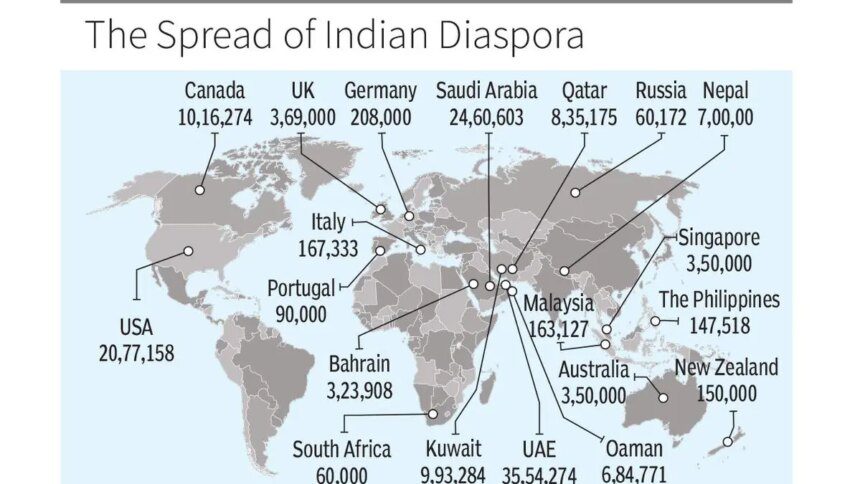“I am so happy I returned home in time,” expressed a doctor friend amid concerns surrounding the H-1B visa uncertainties affecting the Indian diaspora in the United States. “I can’t imagine living in a country where the ruling government is anti-immigrant,” he added.
This remark resonated with my experiences working abroad, where I witnessed the anxieties faced by foreign nationals. During my tenure in an Asia Pacific role, about 10 percent of my colleagues hailed from Southeast Asian countries. They were among the most dedicated and compliant employees, aware that their work permits were tied to their employers, leaving them vulnerable to sudden termination without recourse from local labor departments. This insecurity influenced their conduct in the workplace.
The situation raises a crucial question: Are overseas jobs as idyllic as they are often portrayed? Each year, hundreds of thousands of Indian professionals migrate to foreign countries, and while we celebrate the approximately 35 million Indians living abroad and the $135 billion they remit back to India annually, we must also consider their underlying anxieties.
The Overseas Stamp
There is no denying the prestige associated with working abroad. For many, studying or working in countries like Canada or the United States is a significant aspiration. The conversation often sidesteps specifics about the company or role, drawn instead by the allure of these nations. Those who return for vacation, often bringing gifts such as premium chocolates and scotch, cultivate a sense of envy. Yet, how many individuals in India can afford a month-long holiday, irrespective of their career achievements?
Life @ Uncle Sam
One European boss remarked, “In Europe, we don’t come to work fearing for our jobs, whereas in America I have observed employees constantly afraid of losing their jobs.” Her comment, initially seen as a broad generalization, is supported by research indicating higher stress levels within the American workforce compared to their European counterparts. A 2024 survey by Kickresume revealed that 52 percent of Americans reported feeling stressed or unhappy at work, against 36 percent of Europeans. In this supposed free society, why does this fear permeate the workplace? Despite these pressures, the U.S. remains home to the largest Indian diaspora. Yet, how many connections do our friends and relatives share regarding their corporate anxieties? Social media often presents curated images of idyllic holiday moments and luxury cars, masking deeper challenges.
The Good Life
Visiting developed countries, one can’t help but admire their clean air, advanced infrastructure, and stunning tourist destinations, leading many to perceive these regions as offering a superior quality of life compared to India. However, what about the social dynamics? Notably, many Non-Resident Indians (NRIs) primarily socialize within their community. This raises critical questions about the integration into local cultures and the creation of “mini Indias” abroad. Despite the conveniences offered, including domestic help and competitive salaries in India, around 420,000 Indians have relocated to the U.S. over the past three years.
GharWapsi
Approximately one-third of IIT graduates emigrate annually for further education or work, with elite graduates seeing an even higher migration rate—nearly 60 percent among the top 100 students. The recent introduction of a one-time H-1B fee of $100,000 could potentially alter this trend.
Recent statistics indicate that about 359,000 white-collar professionals have returned to India from over 100 countries, with 88,000 returning from the U.S. It took my nephew, a New York veteran with a decade of experience, only 45 days to secure a lucrative position at a Bengaluru-based product Global Capability Center (GCC). His experience reflects a broader trend, as major tech firms like Meta, Google, Apple, Microsoft, Netflix, and Amazon have collectively added 63,000 new roles within their Indian branches over the last three years.
The Mixed Bag
GCCs have generated 320,000 new jobs in India in the past three years, with approximately 30,000 job openings currently available within these centers. Nevertheless, challenges persist, including skill gaps, salary comparisons, and city preferences for job seekers. The ongoing H-1B visa issues have also resulted in significant market repercussions, with the top five Indian IT firms (TCS, Infosys, Wipro, HCL Tech & Tech Mahindra) losing around $36.2 billion in market valuation within a mere four days leading up to September 25, 2025.
With around 7 million tech workers in place and 230,000 new computer science graduates entering the job market annually, the complexities of this migration phenomenon suggest a profound impact on both local and global employment landscapes.
(The author is the Co-founder of Xpheno, a specialist staffing company)
Published on September 29, 2025










